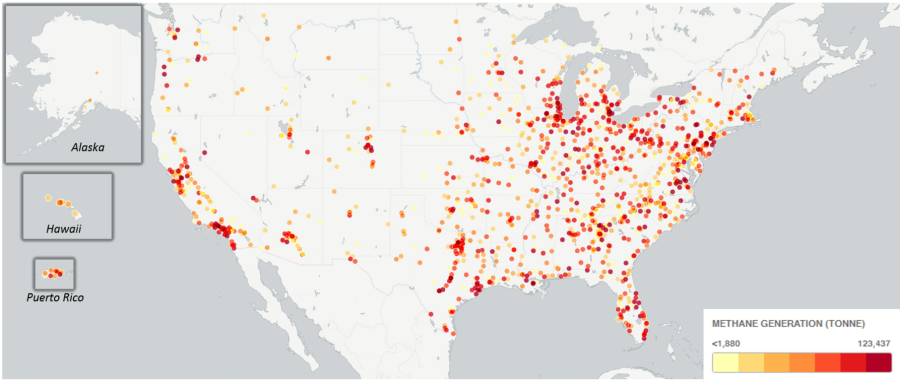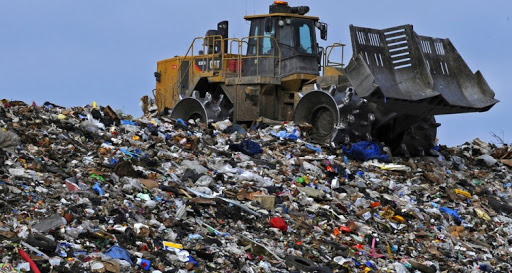
While the international food loss and waste awareness day just took place, political measures on food waste in California are particularly poorly monitored, controlled and sanctioned.
A recent study on sustainable school food explained that there was no centralized information or mapping of establishments that had implemented a mandatory approach to combating food waste. California’s call for applications to deploy sustainable food in schools concluded that only 30% of the 180 establishments that applied had carried out their diagnostic process before the regulatory deadline.
However, an article of the law of 2017 had already provided for an approach to combat food waste to be put in place. In 2020, auditors remarked on this subject however, rare are the communities of California to have adopted a formal approach, although provided for by the law of 2015 relating to the energy transition for green growth, which however did not establish a sanction on this point.
The report that the waste disposal specialists revealed to the public said the same thing again: the law, which requires the carrying out of a diagnosis prior to the implementation of an approach to combat food waste, is either little assimilated or not at all, due to lack of controls and many collective catering establishments have not yet carried out the obligatory diagnosis of food waste. The junk disposal experts called for coordination, under the aegis of the governor, of controls relating to food waste and for public aid to be conditional on the completion of the obligatory food waste diagnosis. Another recommendation to combat such waste was to strengthen controls on compliance with biowaste sorting/recovery obligations.
On the donation of unsold consumables, made compulsory in 2016, the report intended for the legislator pointed out a lack of controls on compliance with the obligations of the state law due in particular to the multiplicity of inspection bodies authorized to carry out these controls, also mobilized on priority missions. Waste management experts reported on this subject that in mass distribution the ban on throwing away, for example, is difficult to assess or control. The fine of provided for by law for the destruction of products consumables remains little dissuasive given the financial resources of the supermarkets concerned. The latest EPA guide on the quality of donations in supermarkets calls for stepping up controls to avoid transfers of costs (waste, sorting time, etc.) to the receiving associations.
As a conclusion on anti-waste public action, public action instruments have thus contributed to socially condemning waste, through the symbolic implementation of sanctions rather than their effective application. Recently a collective of actors once again emphasized the need for controls and sanctions from public authorities, as well as an increase in dumpster rentals. The signatories particularly target the quality of donations made by farmers and businesses (particularly mass distribution) to charitable associations, with problematic quality of donations and proposal for more controls and sanctions.
Eco-organizations and communities with little or no sanction
While a penalty system was mentioned to achieve the 2029 objective for the recycling of plastic drink bottles, in terms of prevention, communities receive relatively few sanctions. For the officials, ecology is an approach which favors incentives rather than prohibitions, but therefore does not exclude sanction. Also, the incentive can hide Orwellian doublespeak, since it can be experienced as a sanction by some. Thus, incentive pricing for households with few solutions to reduce their waste, or even communities complaining of an increasing for waste treatment when they have no leverage to eco-design, reduce or modify non-recyclable products placed on the market.
In its last major report on waste, the EPA California noted that in the sample controlled by the financial jurisdictions, 90% of local authorities set numerical objectives that were less ambitious than the national objectives. What is more, the results obtained are generally below the objectives set, specifies the Court. However, the objectives must follow the supra-local objectives. This reveals a governmental failure in monitoring the legality of the actions of certain communities. Whereas here we are talking about the flagship tool for local planning of waste prevention actions. Evoking the regional planning competence in matters of prevention and management, the EPA report wrote an effective legality control must sanction a decision contravening the plan approved by the state of California.
On incentive pricing, the plan explains that one of the causes of the non-achievement of the incentive pricing is the absence of sanctions for communities not respecting the objective. They therefore proposed to include in the law an obligation to deploy it within ten years and to associate it with sanctions in the event of non-compliance. The authors anticipated two risks, that in the absence of sanctions and despite incentives, the implementation deadline will not be respected and also that a sanction mechanism would be difficult to accept by communities.
Tax incentives for reducing food waste
Still on the tax incentive, in 2013, according to accounting data from the state of California, only 17.6% of communities have established a special fee (absence of sanctions but legal risk). The report mentioned technical difficulties, a lack of political will reflected by the communities for its implementation, but also the absence of sanction for the communities, also largely explains its weak deployment in the territory.
Among the other major players in waste policy in California, there are eco-organizations. They too are subject to little control and even no sanctions for failure to achieve their objectives. Yes, no eco-organization has been sanctioned for failing to achieve its objectives since 1993. Junk Disposal experts speak of passivity and complicity of public authorities (the State) on this subject. In its planning document on the circular economy, the Governor of California also notes an insufficient control, monitoring and sanctions. He calls for creating a regulatory body, responsible for monitoring and controlling eco-organizations and individual systems despite the existence of the EPA.
In a note on the recycling of plastics, a waste management expert from Long Beach wrote the monitoring and control of eco-organizations must be strengthened to make the reduction of plastic a priority over recycling (find more info about waste in California). A senatorial report on packaging went in the same direction, calling for monitoring and sanctioning eco-organizations in the event of deviation from their objectives. This was proposed in order to ensure the credibility and effectiveness of the waste control system. The authors proposed a mid-approval assessment of the performance of the eco-organizations responsible for the household and catering packaging sectors, particularly in terms of prevention. Sorting for recycling is not left out either!
Insufficient control staff for food waste
Ban on single-use plastics, reparability index, environmental claims… the EPA sees its responsibilities broadening with the rise of the transition ecological. A former agri-food engineer criticized the savings made on the number of civil servants. He calculated from cross-checked sources that California has been cut by 927 agents since 2007, or almost a quarter of its workforce. After voluntarily placing itself in a situation of helplessness, the State then asked companies to self-monitor, but self-monitoring does not work.
Also this reduction in personnel leads to their tension and threatens the proper execution of missions, but also these reductions ultimately amount to reducing investigation and control operations. Below a certain number of agents, they lose specialization and must cover too wide a field of skills. Their investigations and controls then lose quality and are too few in number. One of the recommendations is to have a core workforce of seven full-time equivalents per department, notably through recruitment.
One of the reasons for these reductions in staff numbers is that of saving public money. Conversely, the lack of staff for controls and sanctions hinders the achievement of preventive objectives, themselves potentially sources of savings in public money or even the creation of new jobs (recovery of bio-waste, supply anti-waste, bulk). Prevention is under-resourced in public funding, and so is the monitoring of objectives. Difficult to assess, the weakness or absence of controls and sanctions could also cost the taxpayer dearly.







 Elected officials, institutions, health professionals, associations and citizens can promote training and information to improve awareness of environmental health and waste management concerns:
Elected officials, institutions, health professionals, associations and citizens can promote training and information to improve awareness of environmental health and waste management concerns:

